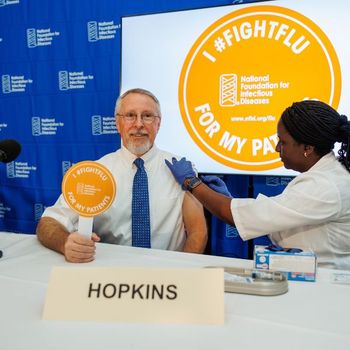
Second Annual APIC/JCR/Joint Commission Infection Prevention and Control Conference to Focus on Managing MRSA: A Call to Action
WASHINGTON, D.C. -- The rapid spread of drug-resistant bacteria known as methicillin-resistant Staphylococcus aureus (MRSA) will be the focus of a three-day discussion to examine best practices to combat this growing problem.
Managing MRSA: A Call to Action is the theme of the August 14-16, 2006 conference where experts from the Association for Professionals in Infection Control and Epidemiology (APIC), Joint Commission Resources (JCR), and the Joint Commission on Accreditation of Healthcare Organizations will meet with infection prevention and control leaders and other health care professionals to study this critical issue. The conference will be held at the Hyatt Regency Cambridge in Cambridge, Mass.
More than 70 percent of the bacteria that causes infections for two million hospitalized Americans each year are resistant to at least one of the drugs most commonly used to treat them, according to the Centers for Disease Control and Prevention (CDC).
This conference will specifically address the challenges of MRSA, says Karen H. Timmons, chief executive officer, JCR. This is significant because currently there is no  clear single solution to combat MRSA. We need to identify and disseminate best practices to fight this problem. The conference will provide a forum for health care professionals to make strides in doing just that, she continues.
Patients suffering from infections caused by drug-resistant bacteria are likely to spend more time in the hospital and require treatment with second- or third-choice drugs that may be less effective, more toxic and more expensive.
In addition to infections in hospitals, MRSA is now occurring with increasing frequency in the community. Also, state legislatures are beginning to consider mandatory active surveillance. Estimates of the prevalence of MRSA vary significantly from country to country, as do prevention efforts and methods of control. Topics of discussion at the conference will include newer, faster screening methods to identify colonized or infected patients, together with contact-Âisolation, enhanced methods for hand hygiene, treatment options, personal protective equipment, antimicrobial prophylaxis and active surveillance cultures. The conference will also provide information on state legislatures that are considering mandatory active surveillance and examine which prevention and control strategies are realistic, practical and cost effective.
Once again, APIC is addressing an important infection prevention issue that is gaining increased exposure on the state, national and international levels, says Kathleen Meehan Arias, MS, CIC, president of APIC, and we are pleased to partner with JCR and the Joint Commission to provide this forum for discussing the latest practices for preventing the spread of MRSA.
Source: APIC
Newsletter
Stay prepared and protected with Infection Control Today's newsletter, delivering essential updates, best practices, and expert insights for infection preventionists.






